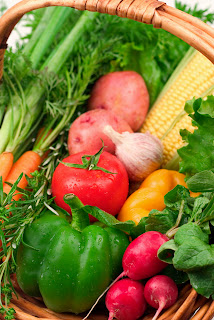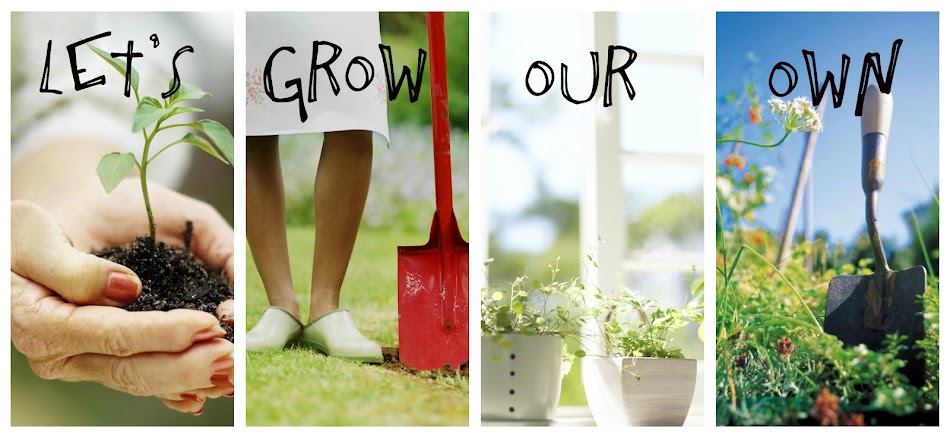April is here! If you are anything like me you are just itching to get started on your garden this year. Before you bust out your favorite shovel and gardening gloves though, make sure you are watching the temperatures and forecast in your local area. The planting schedule below is based off of USDA zones and an average planting time.We all know how unpredictable the weather is though, so this is just a suggested list. If you are in the colder zones like I am you may just be starting your indoor seedlings, click here for more information about that! Happy Gardening!
Zone 1: Asparagus, Beets, Celery, *Chives, *Corn, *Cucumbers, Potatoes, Radish,
Zone 2: Artichokes, Beets, *Broccoli, *Cabbage, Carrots, *Cauliflower, Celery, Chard, Chives, Corn, *Endive, Kohlrabi, Leeks, *Lettuce, *Onions, *Parsley, Parsnip, Peas, Potatoes, Rhubarb, Spinach, Turnips
Zone 3 & 4: Asparagus, Beets, *Broccoli, *Brussels Sprouts, *Cabbage, Carrots, *Cauliflower, Collards, Endive, Horseradish, Kale, Kohlradi, *Lettuce, Onions, Parsley, Peas, Potatoes, Sweet Potatoes, Radish, Rhubarb, Spinach, Turnip
Zone 5 & 6: Asparagus, Beets, Cabbage, Cauliflower, Collard, Kohlrabi, Lettuce, Onion, Peas, Irish Potatoes, Spinach
Zone 7 & 8: Beans, Cantaloupe, Corn, Cucumbers, Eggplant, Okra
Zone 9 & 10: Beans, Cantaloupe, Corn, Cucumbers, Eggplant, Okra, peas, peppers, potatoes, pumpkin, squash, tomatoes, watermelon
*It is recommended these plants need to be started indoors before they are planted outside
Check with your local extension office for area specific information
Monday, April 9, 2012
Tips on Fertilizing your Garden
 When is the Best Time to Fertilize?
When is the Best Time to Fertilize?This Spring as you are starting your garden you may be asking yourself, when is the best time to fertilize? The key to understanding the answer to this question is to understand the growing cycle of your plants.
Each plant has three main stages: the growth stage, the fruiting stage and the dormant stage.
Key times to fertilize are at the beginning of the growth stage and then right before the fruiting stage. There isn't a big need to fertilize before the dormant stage.
What Should I Use as a Fertilizer?
Our favorite fertilizer is made by Dynamite Specialty Products. Vigor is made from a proprietary process that starts with a sugar cane molasses base. To that, they add a complete and balanced mineral and trace mineral package into a nutrient cluster that grabs soil particles on a microscopic level. The result is a custom-manufactured, non-leaching, fertilizer. This fertilizer stays put until your plant needs it allowing plants to feed when they want. The result is a food that promotes plant health rather than plant growth. Quality vs. quantity. Vigor's focus is on making sweet, delicious fruits and veggies with incredible flavor and healthy, happy plants. This product combines the soil-building qualities of longtime Dynamite soil product Humi-Zyme-Rx with our CCF (concentrated compost factor) and an additional trace mineral pack that takes our old standby (Humi-Zyme) to the next level.
To order Vigor, call Dynamite's Customer Service at: (800) 697-7434
Happy Gardening! Here's to healthy soil and healthy plants.
To order Vigor, call Dynamite's Customer Service at: (800) 697-7434
Happy Gardening! Here's to healthy soil and healthy plants.
Thursday, March 29, 2012
Planting Spinach- Have Salad all Spring!
Tired of going to the store every week to buy spinach for your salads? Grow your own organic, pesticide free spinach in your own yard! Check out this video from Jim Zamzow on how to plant spinach in a large pot that will provide for you and your family all Spring!
Zesty Chicken Salsa Soup Recipe
Zesty Chicken Salsa Soup
All of us have those recipes, the old standbys right? These are the ones that you know will be fabulous with little effort.
This recipe showcases garden fresh tomatoes, garlic, cilantro & onions. If you happen to have limes or avocados in your garden, then they work perfect also!
Ingredients
2-3 Boneless Chicken Breasts thawed
1 onion diced
3-4 cups chicken broth
10 tomatoes [including juice] diced
4 garlic cloves- peeled and finely diced or pressed
4 oz can of green chili (or fresh if you have them!)
2 tsp salt
lime juice
cilantro (garnish)
Avacados (sliced & served on top)
Sour Cream (garnish)
Tortilla Chips (garnish)
Put the chicken, onion, broth, tomatoes, garlic, green chile & salt into a crock pot. Turn on high and cook for 4-5 hours until chicken is cooked through. Remove the chicken breast and shred with a fork. Add chicken back to the soup and season to taste. If you want your soup to be "brothier" feel free to add more chicken broth. Serve hot with fresh lime juice squeezed on top, cilantro, sour cream, avocado chucks and tortilla chips if you desire. Enjoy!
All of us have those recipes, the old standbys right? These are the ones that you know will be fabulous with little effort.
This recipe showcases garden fresh tomatoes, garlic, cilantro & onions. If you happen to have limes or avocados in your garden, then they work perfect also!
Ingredients
2-3 Boneless Chicken Breasts thawed
1 onion diced
3-4 cups chicken broth
10 tomatoes [including juice] diced
4 garlic cloves- peeled and finely diced or pressed
4 oz can of green chili (or fresh if you have them!)
2 tsp salt
lime juice
cilantro (garnish)
Avacados (sliced & served on top)
Sour Cream (garnish)
Tortilla Chips (garnish)
Put the chicken, onion, broth, tomatoes, garlic, green chile & salt into a crock pot. Turn on high and cook for 4-5 hours until chicken is cooked through. Remove the chicken breast and shred with a fork. Add chicken back to the soup and season to taste. If you want your soup to be "brothier" feel free to add more chicken broth. Serve hot with fresh lime juice squeezed on top, cilantro, sour cream, avocado chucks and tortilla chips if you desire. Enjoy!
Monday, March 26, 2012
Saving Seeds For Next Year- Gardening Tips
People have been saving seeds as long as people have been gardening. Before there were stores on every corner where you can buy seeds and plants, saving seeds was the typical way gardeners would prepare for next year's crop.
Why Save Seeds?
So why would I want to save seeds each year if it's so easy to just go to the store and buy seeds or plants?
The main reason is that you have a plant that you love and you want to have it again next year!
What Types Can I Save?
The seeds that are best for saving are heirloom, self-pollinated or open pollinated plants.These are the only varieties that will be exactly like the parent plant. Self-pollinated plants are the easiest to save and include: Beans, Peppers, Chicory, Endive, Lettuce, Peas, & Tomatoes.
Other types of plants are likely a hybrid. Saving seeds from these plants will not result in a plant exactly like the parent but will have traits from it. So if you are looking for something different this would be a good way to go.
Choose the Best
 A rule of thumb is to always save the seeds from the best quality plants. Pay attention to which plants were the most productive, disease resistant and produced great blooms, fruits, or vegetables.
A rule of thumb is to always save the seeds from the best quality plants. Pay attention to which plants were the most productive, disease resistant and produced great blooms, fruits, or vegetables. How do I Save the Seeds?
Depending on what type of seeds you are trying to save there are several different methods. If you are dealing with beans, flowers, broccoli, lettuce or any other plant where the seed pods dry on the plant, you can catch the seeds by placing small bags over the seed heads. Another way to do this is to pull the plant out of the ground just before the seeds are completely dry and storing the plants upside down in a paper bag.
If you are harvesting seeds from vegetables such as peppers, eggplant, tomatoes, or squash where the seeds are inside of the vegetable or fruit, you will need to let the vegetable sit until they are far past the edible stage. When the seeds are then ready you can simply scoop out and dry the seeds. Tomatoes are different though and require a wet processing method that you can look up.
Storing the Seeds:
There are several things to remember when you are storing the seeds:
1. The seed must be dry, remove as much chaff as possible
2.They must be stored in a dark, dry place at a temperature between 32 and 41 degrees Fahrenheit. [your refrigerator!]
3. Store them in individual paper packets that are labeled.
4. These paper packets need to be stored in tightly sealed glass containers [ you can store the paper packets together!]
5. Adding a small amount of silica-gel desiccant to each container helps to absorb moisture and keep the seeds dry.
6. Use these saved seeds the following year for best results
Monday, March 19, 2012
Garden Fresh Strawberry Smoothie
First thing in the morning I love to make creamy strawberry smoothies. The tangy rich taste just seems to start my morning off right.
Ingredients:
3/4 cup fresh strawberries [pitted]
1 frozen banana
1 cup almond milk [or regular milk if you prefer!]
1/4 cup Greek yogurt
2 ice cubes
Directions:
Puree in the blender and serve immediately. Cutting a fresh strawberry as a garnish adds a beautiful touch as well.
Ingredients:
3/4 cup fresh strawberries [pitted]
1 frozen banana
1 cup almond milk [or regular milk if you prefer!]
1/4 cup Greek yogurt
2 ice cubes
Directions:
Puree in the blender and serve immediately. Cutting a fresh strawberry as a garnish adds a beautiful touch as well.
Thursday, March 15, 2012
Garden Tool Co.
If you are anything like me then you appreciate quality. Garden Tool Co. crafts top-of-the-line gardening tools that are backed by a 100% satisfaction guarantee. I love buying things with the peace of mind that I will love it or I can return it . Check out their vast selection here.
If you're not sure where to start, they have a great article on their site called "List of Garden Tools Every Gardner Must Have..Or Not".
If you're not sure where to start, they have a great article on their site called "List of Garden Tools Every Gardner Must Have..Or Not".
Subscribe to:
Posts (Atom)





